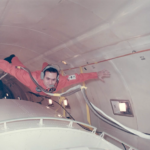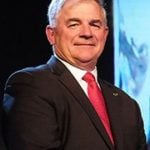Space Awareness
An Apollo 50th Anniversary Moment
Written by: developer
Gordon’s Orbital Garbage Disposal and Rocket Herding Service
 by John Holst, Space Foundation Research Analyst
by John Holst, Space Foundation Research Analyst
On a mid-September morning in 1966, astronaut Richard Gordon started his day like most Americans: he took out the garbage. Instead of walking to the curb and tossing the bags into a can, he stood on his seat in his Gemini XI capsule and pitched the filled bags into space through the capsule’s open hatch. Charles (Pete) Conrad, a Gemini veteran sitting in the spacecraft, passed the bags to Gordon, and Gordon threw them into orbit around the Earth. The surreal scene was very different for both astronauts from their circumstances 24 hours before.
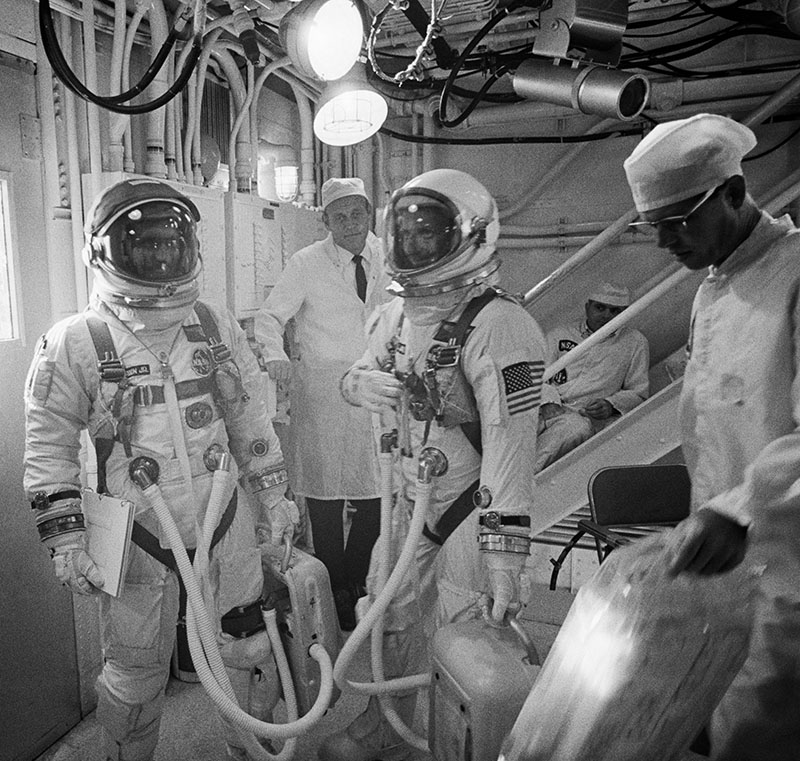 The day prior, on September 12, 1966, Conrad and Gordon were strapped into their Gemini capsule. They were ready to conduct their three-day Gemini XI mission. September 12 was a good day for Gemini XI and its astronauts–after two launch delays during the prior three days, both Gemini-Agena target vehicle (GATV) and Gemini XI capsule launched on time. The Gemini XI crew launched 97 minutes after the GATV.
The day prior, on September 12, 1966, Conrad and Gordon were strapped into their Gemini capsule. They were ready to conduct their three-day Gemini XI mission. September 12 was a good day for Gemini XI and its astronauts–after two launch delays during the prior three days, both Gemini-Agena target vehicle (GATV) and Gemini XI capsule launched on time. The Gemini XI crew launched 97 minutes after the GATV.
An hour and a half after the launch, the astronauts docked with the GATV. They then practiced docking and undocking with the GATV, learning lessons applicable to spacecraft docking in the later Apollo missions. After a few hours of practice, they docked with the GATV, and commanded an engine test with the vehicles linked together. Afterwards, the astronauts ate, napped, and started getting Gordon ready to conduct his first extra-vehicular vehicular activity (EVA), or spacewalk. Once readied, the astronauts received permission to open the capsule. Gordon proceeded taking out the garbage. Next, he had to attach a tether from the GATV to the Gemini capsule, requiring him to move outside both vehicles. To keep from floating away, he straddled the spacecraft nose like a cowboy straddles a horse. Conrad encouraged Gordon over the radio with a “Ride ’em, cowboy!”
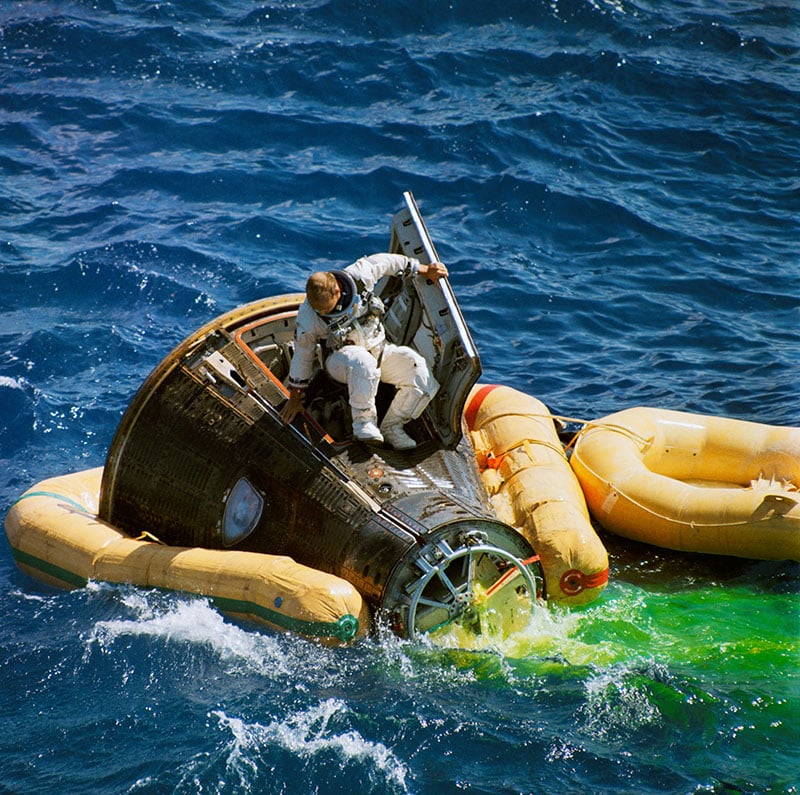 The physical activity of attaching the tether while moving in space exhausted Gordon. Gordon slowly made his way back to his capsule seat, and closed the hatch. It had been only 33 minutes of a scheduled 107-minute EVA, but Conrad made the decision that Gordon needed to rest. Both astronauts conducted necessary but low-stress activities then rested.
The physical activity of attaching the tether while moving in space exhausted Gordon. Gordon slowly made his way back to his capsule seat, and closed the hatch. It had been only 33 minutes of a scheduled 107-minute EVA, but Conrad made the decision that Gordon needed to rest. Both astronauts conducted necessary but low-stress activities then rested.
The next day the astronauts fired the GATV’s engine for 26 seconds while still connected to it. The GATV moved both spacecraft into a higher orbit, nearly 1570 kilometers (850 miles) above the Earth. About three hours later, the astronauts commanded the GATV’s engine to fire again, this time to decrease their speed and lower their orbit to 304 kilometers (189 miles).
Then another EVA for Gordon, this time for two hours, but requiring him to stand on his seat while his upper body poked out the side of the capsule to conduct some more experiments. Not needing to move his body around in space made all the difference and Gordon managed to complete the EVA on schedule. Then some rest. One more event to go: the tethered vehicle exercise.
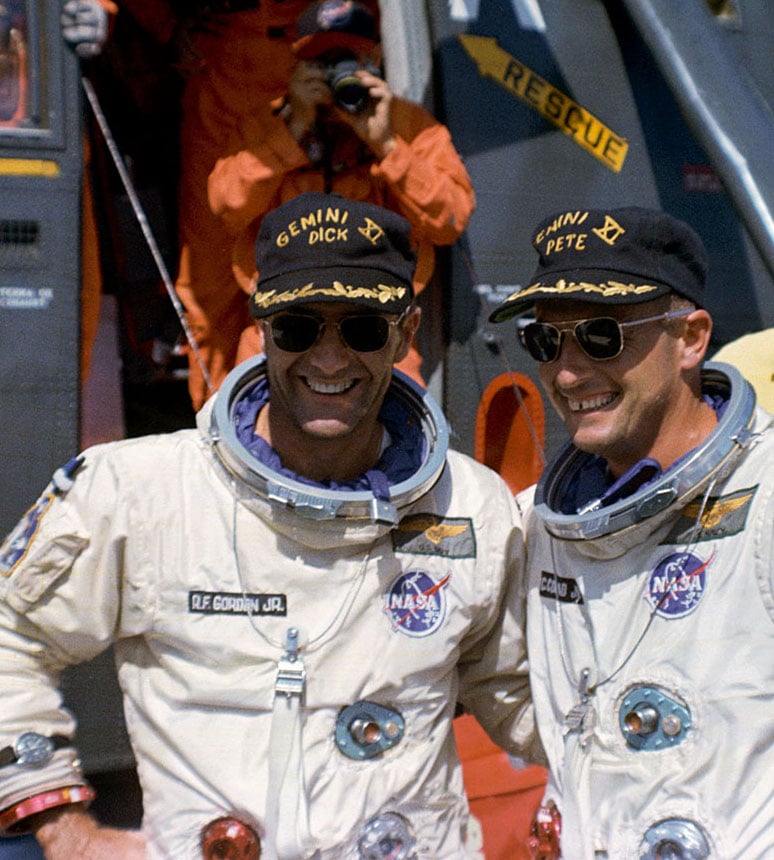 The tethered vehicle exercise was the reason Gordon conducted the first EVA. The astronauts backed the Gemini XI capsule away from the GATV while still connected by the tether. They moved the Gemini capsule to the furthest limit of the tether, then used the spacecraft’s thrusters to move both vehicles in a cartwheel motion around the center of the tether. The purpose was to see how centrifugal force would impact both vehicles. While initially challenging, the astronauts accomplished this using the GATV’s thrusters as well. All major objectives were completed. After accomplishing a few extra experiments, it was time for the mission to come home.
The tethered vehicle exercise was the reason Gordon conducted the first EVA. The astronauts backed the Gemini XI capsule away from the GATV while still connected by the tether. They moved the Gemini capsule to the furthest limit of the tether, then used the spacecraft’s thrusters to move both vehicles in a cartwheel motion around the center of the tether. The purpose was to see how centrifugal force would impact both vehicles. While initially challenging, the astronauts accomplished this using the GATV’s thrusters as well. All major objectives were completed. After accomplishing a few extra experiments, it was time for the mission to come home.
A little over 71 hours after their launch into orbit, Conrad and Gordon were floating in the Atlantic Ocean. The fully automated reentry, a secondary NASA objective, displayed the viability and accuracy of using computers for reentry. The computer landed the capsule within 4.6 kilometers (nearly three miles) of their recovery ship’s location. Gemini’s astronauts had learned a lot.
This article is part of Space Watch: September 2016 (Volume: 15, Issue: 9).

